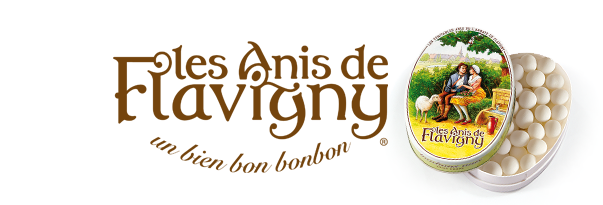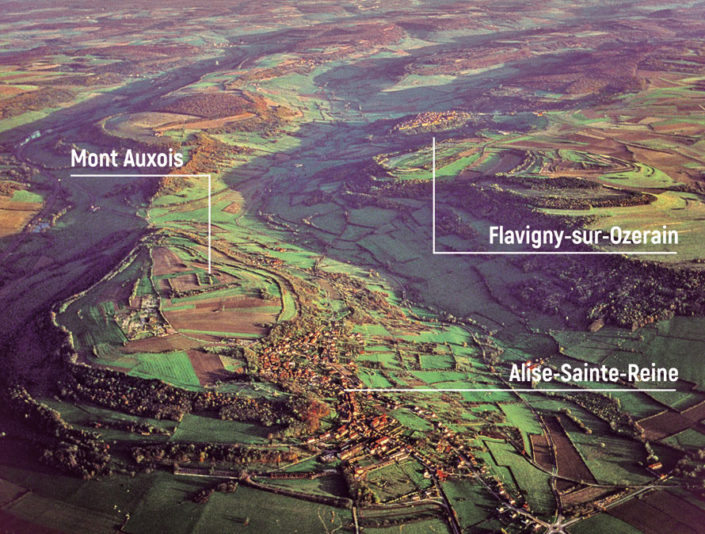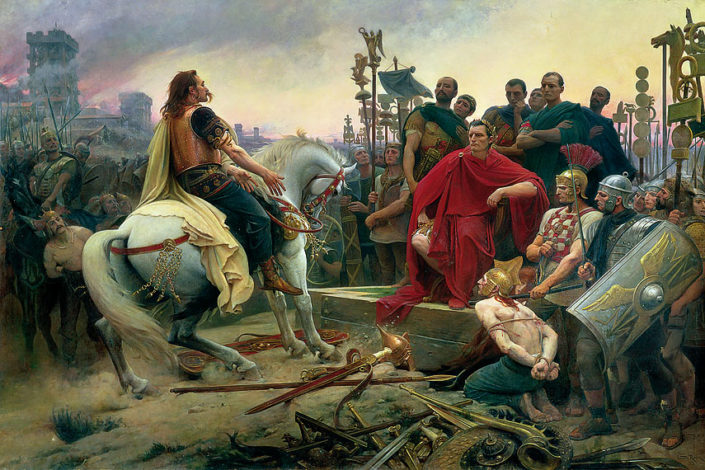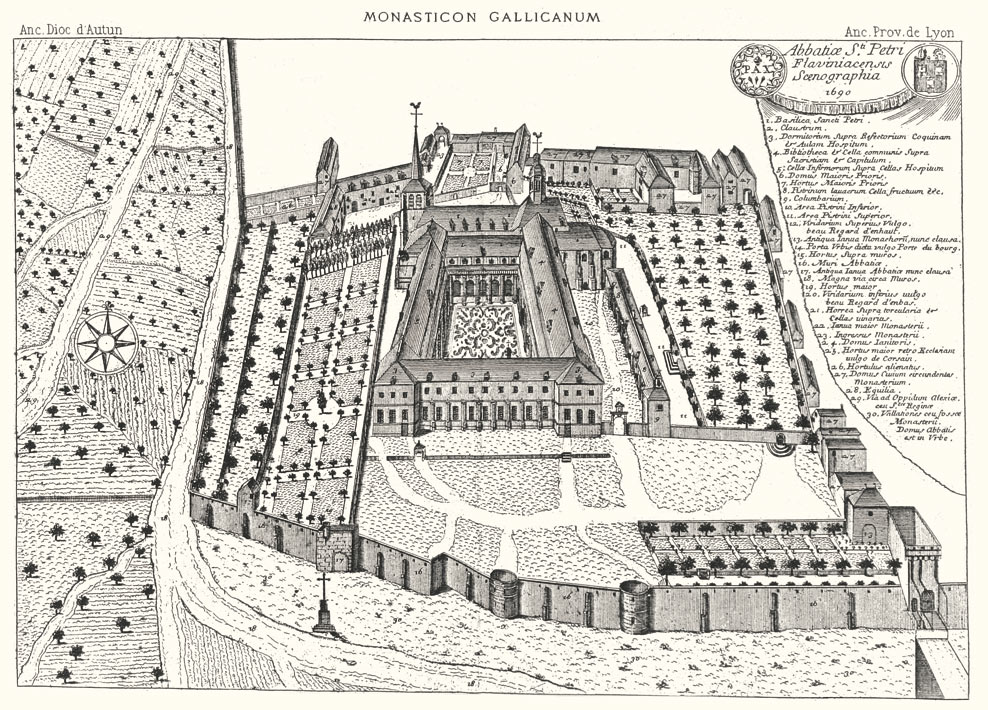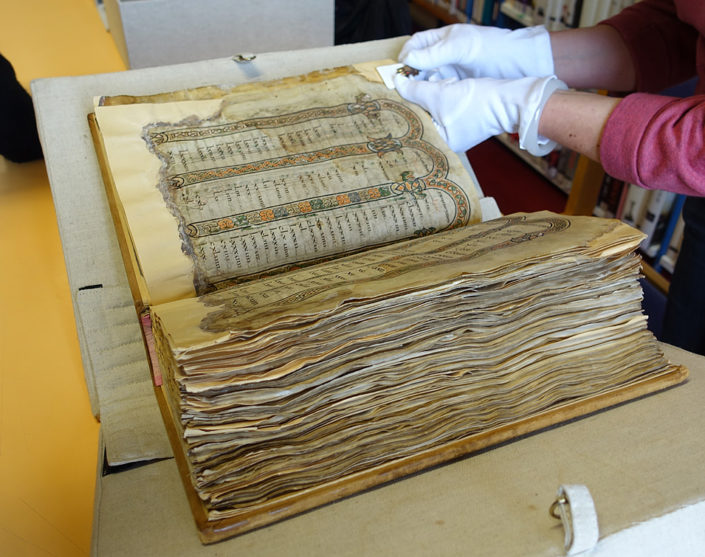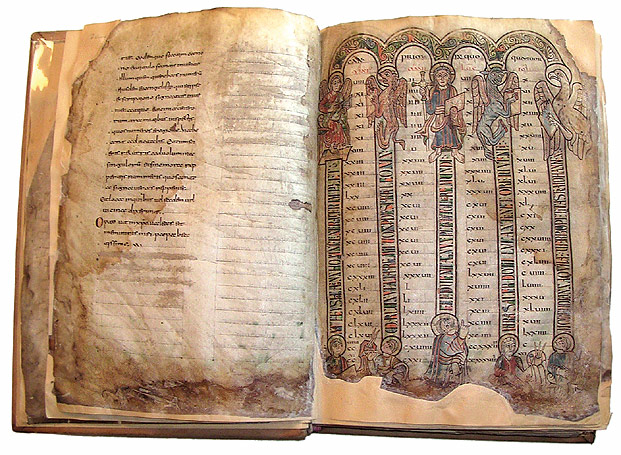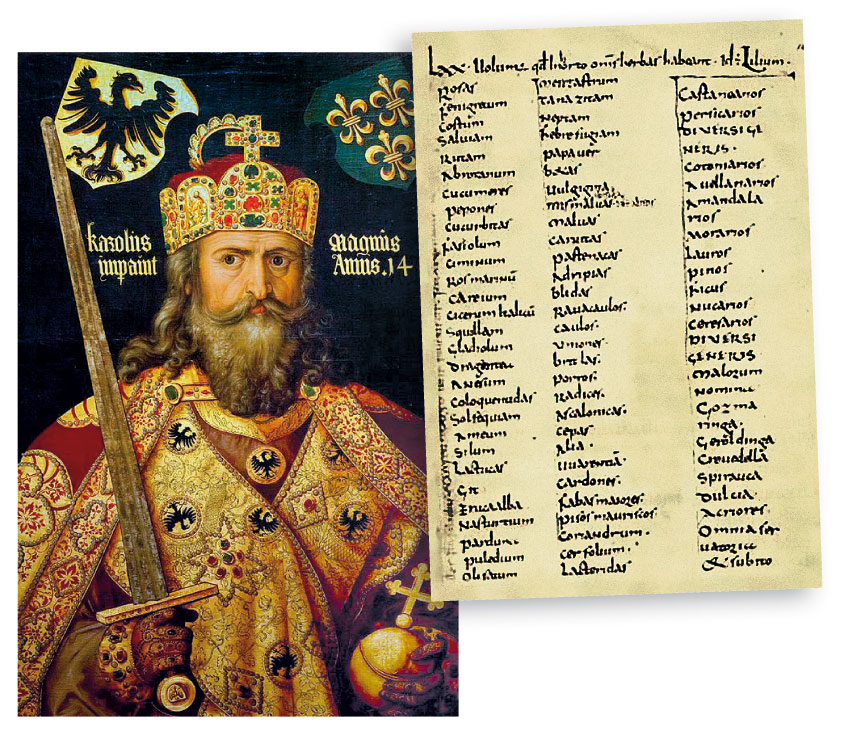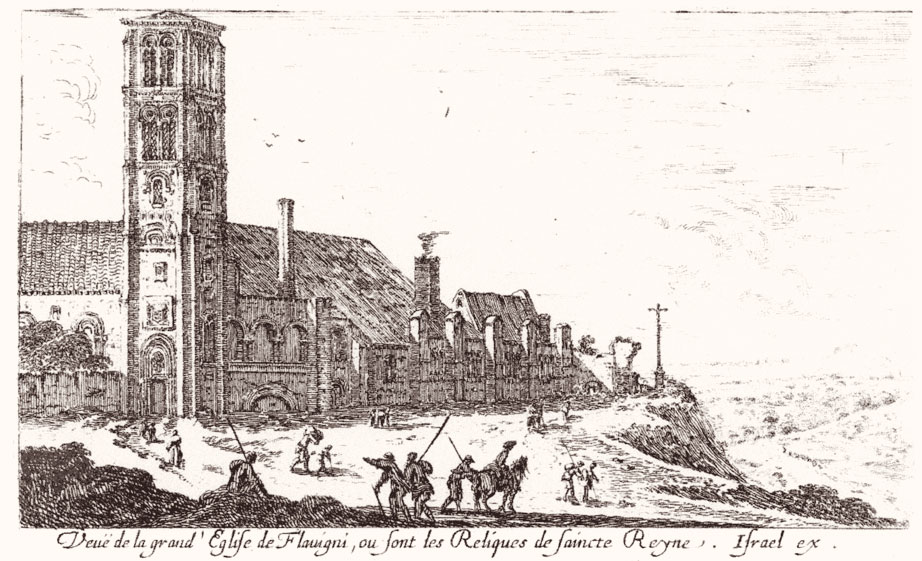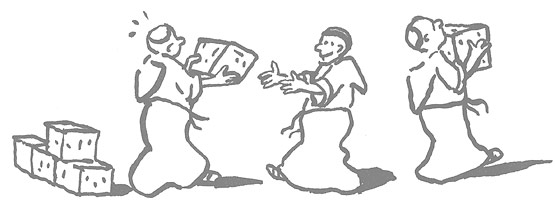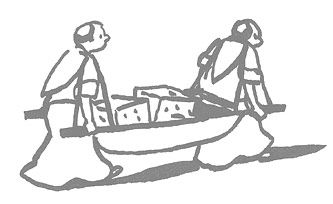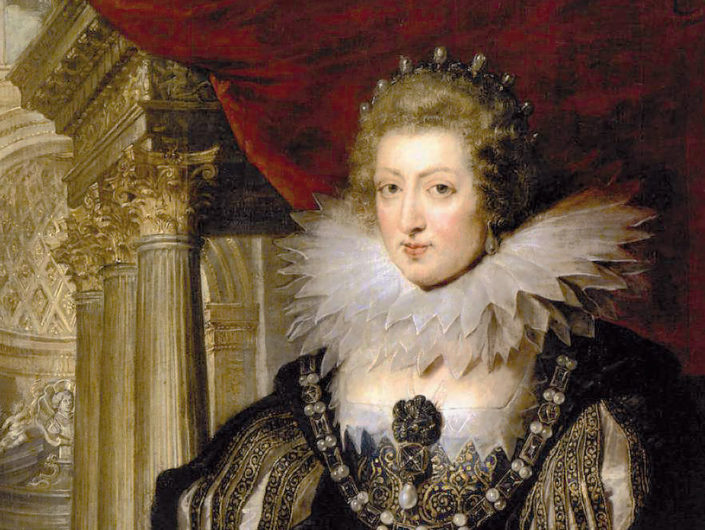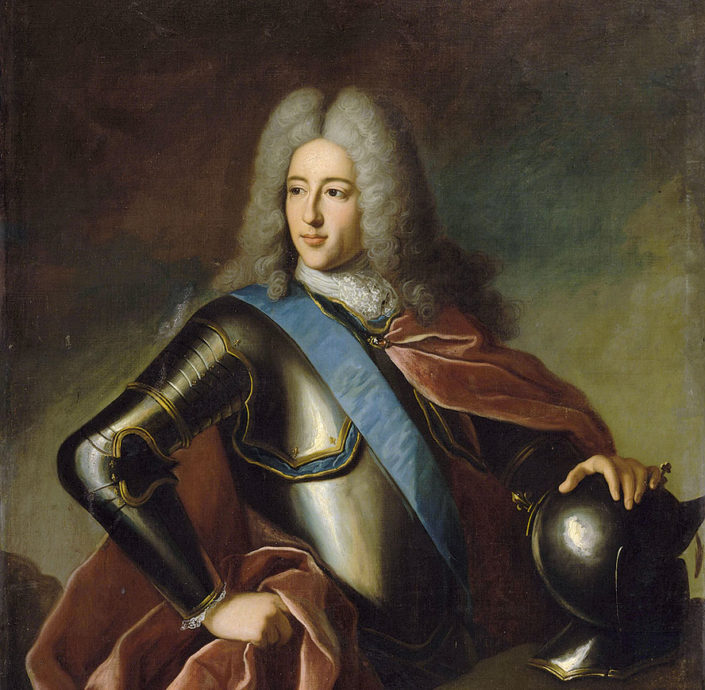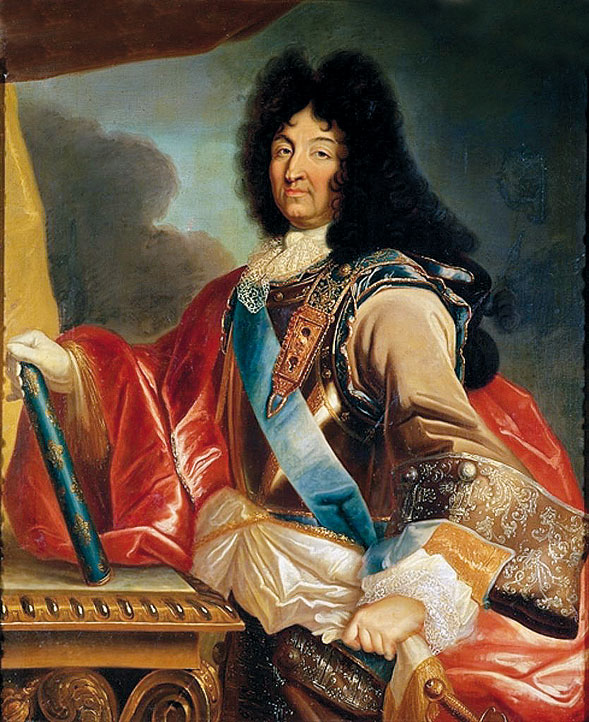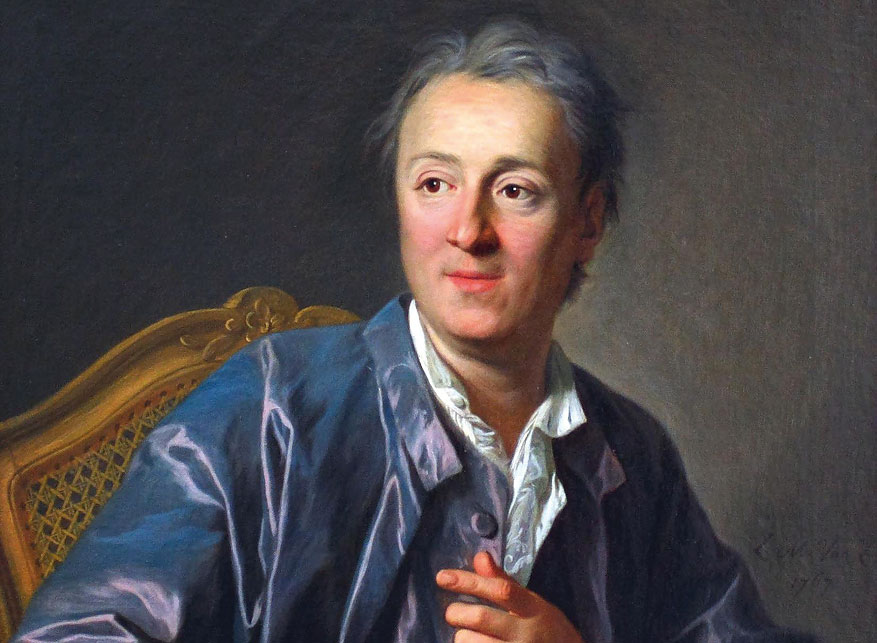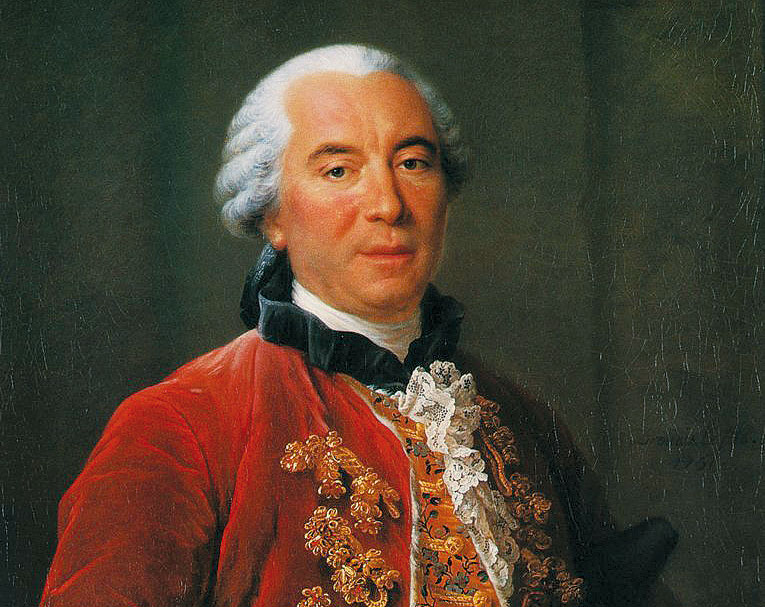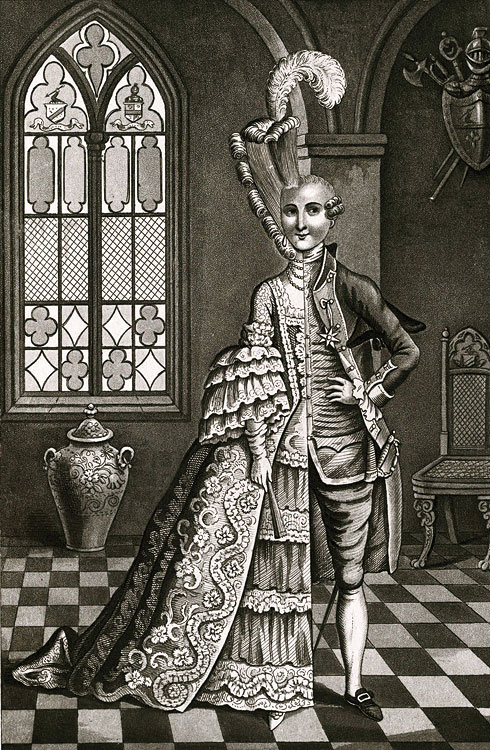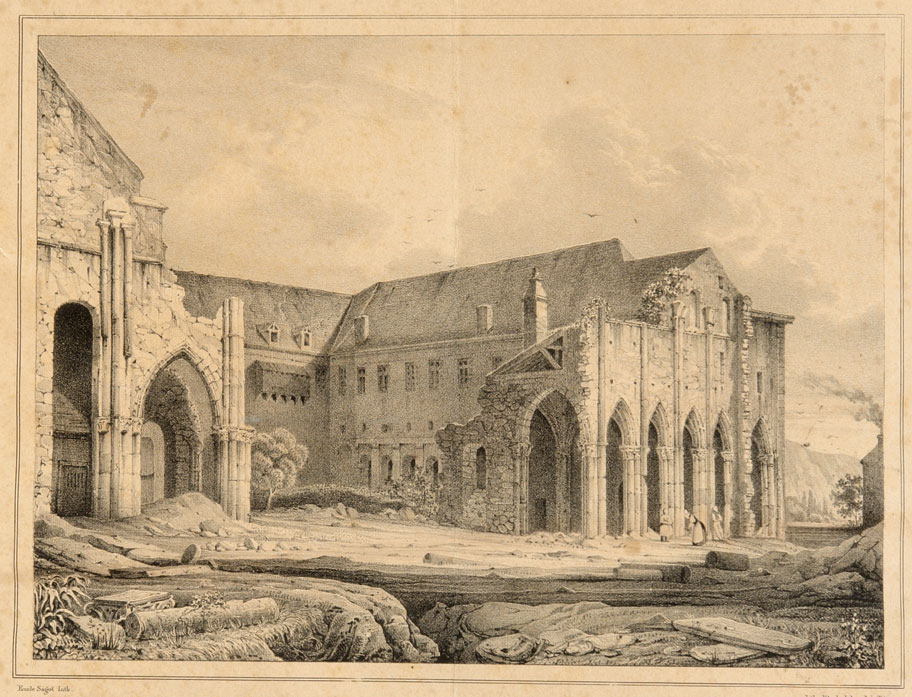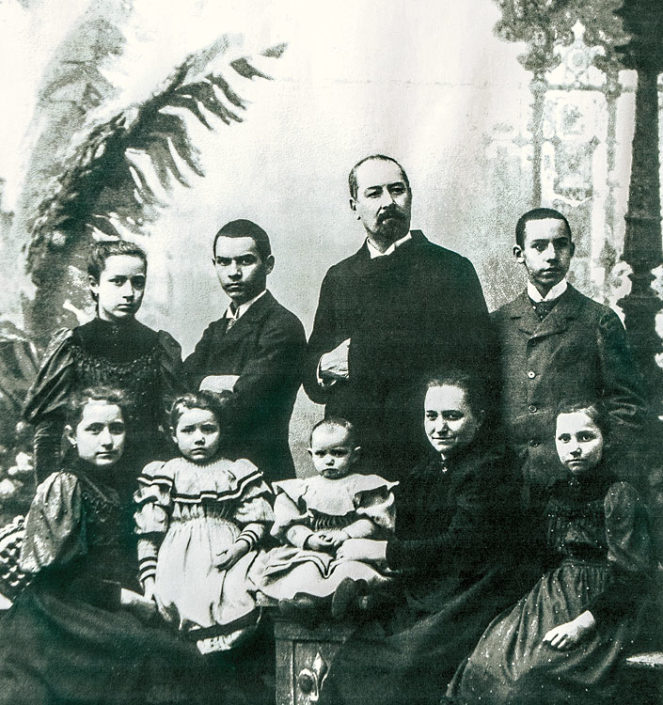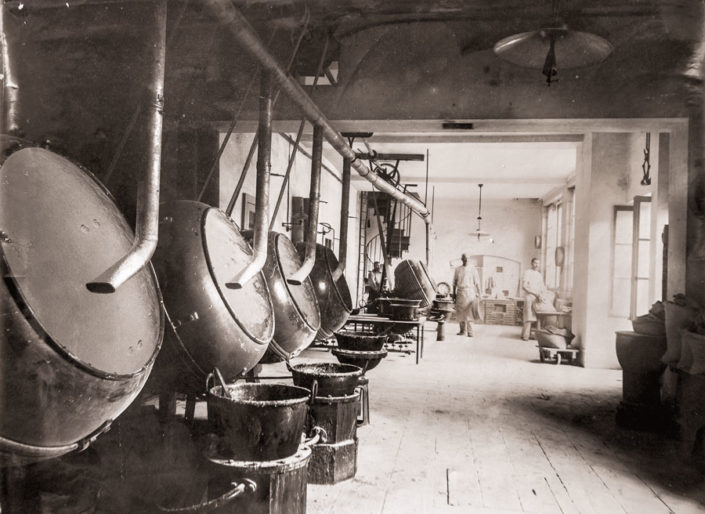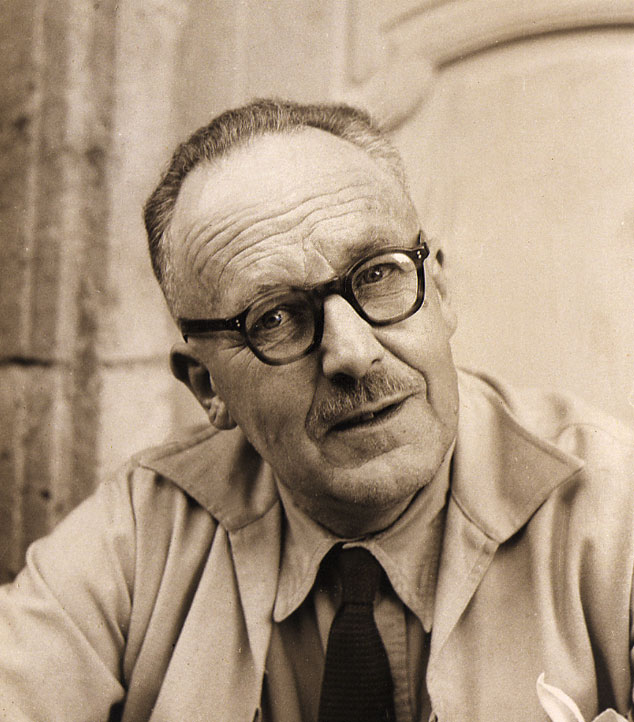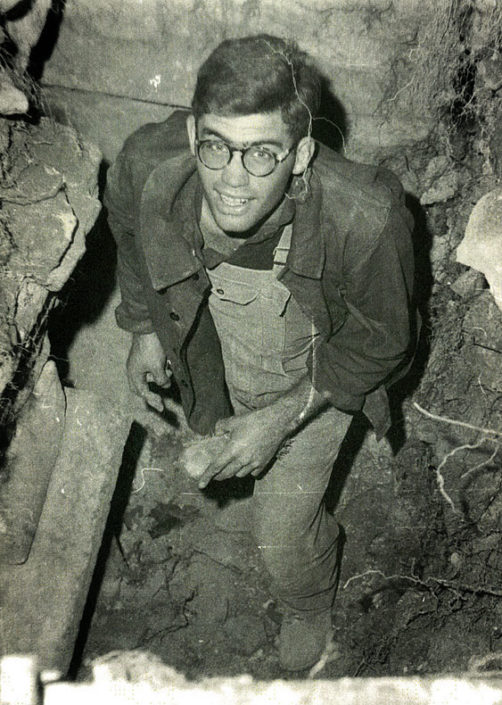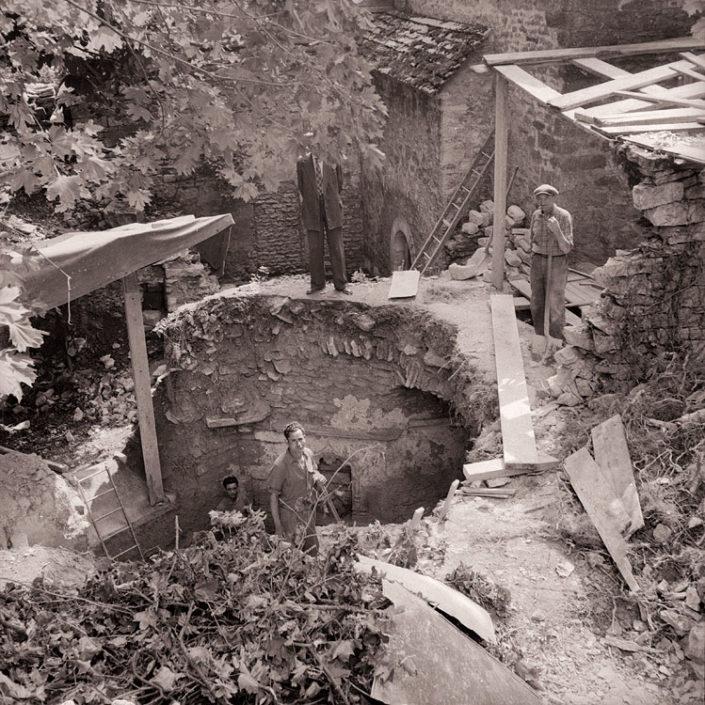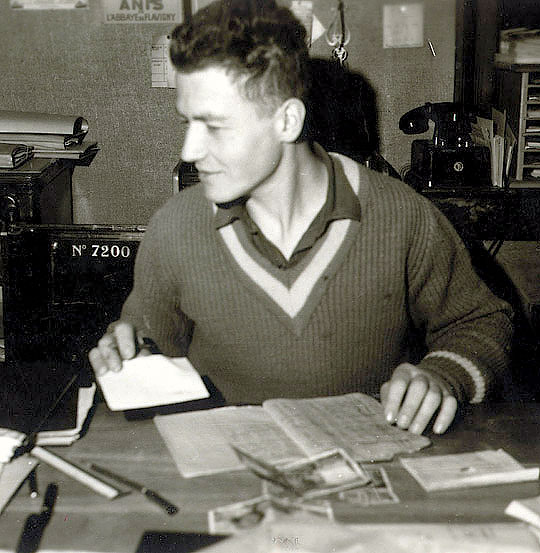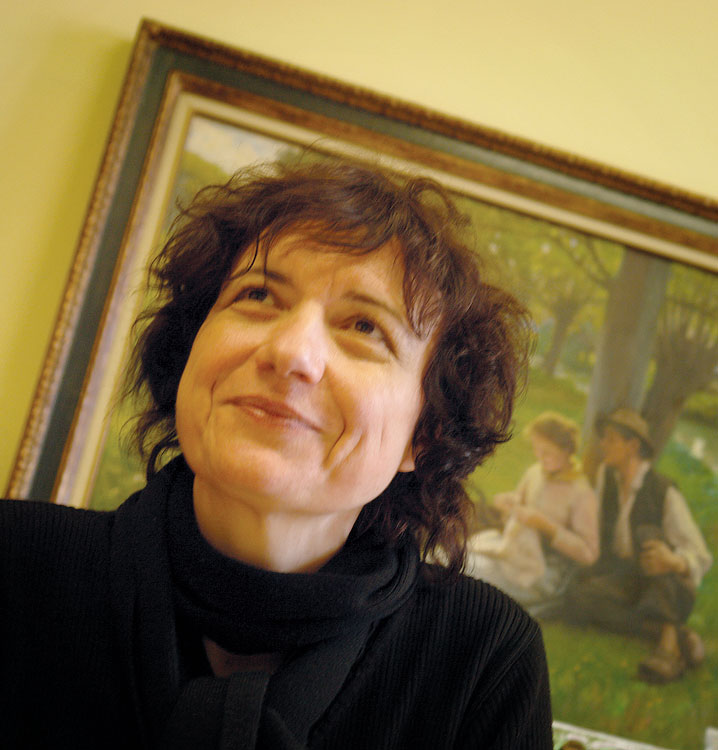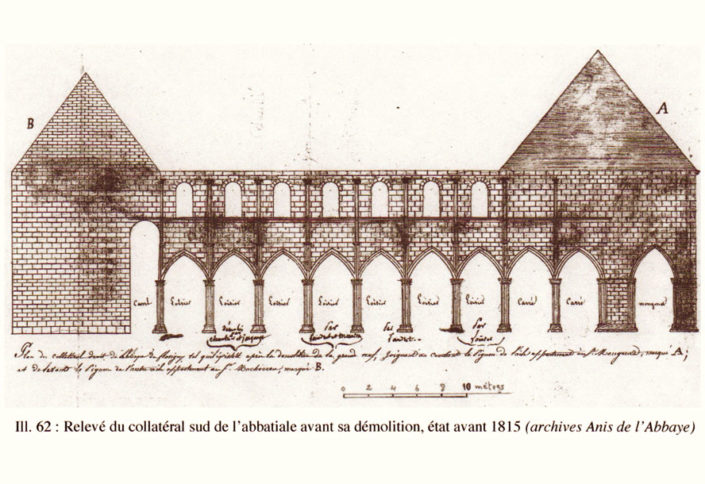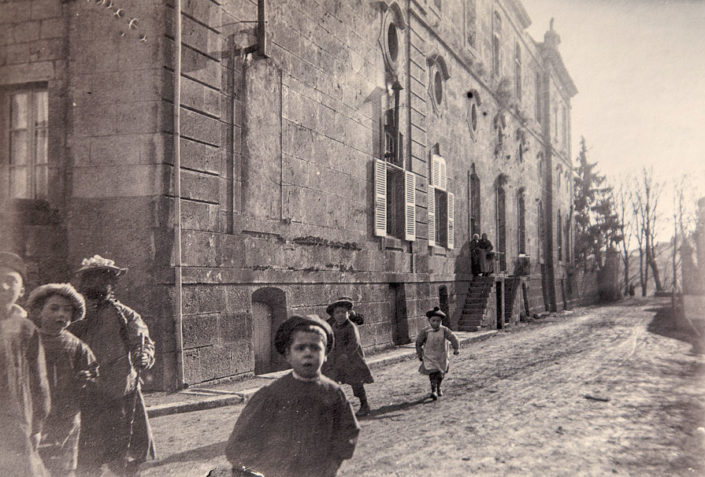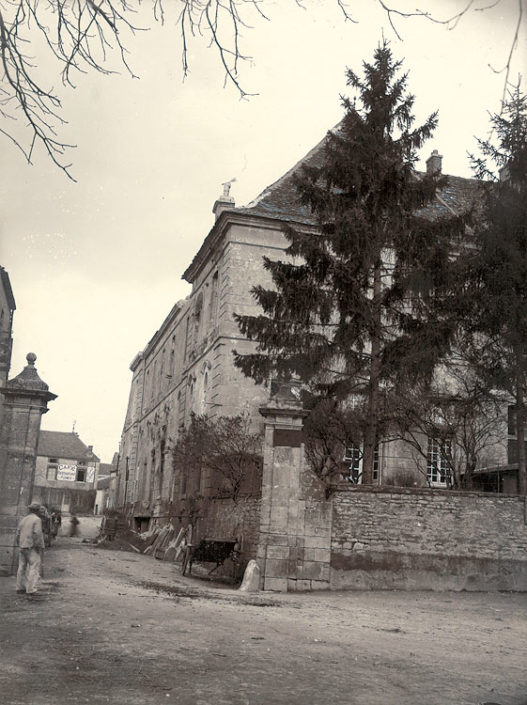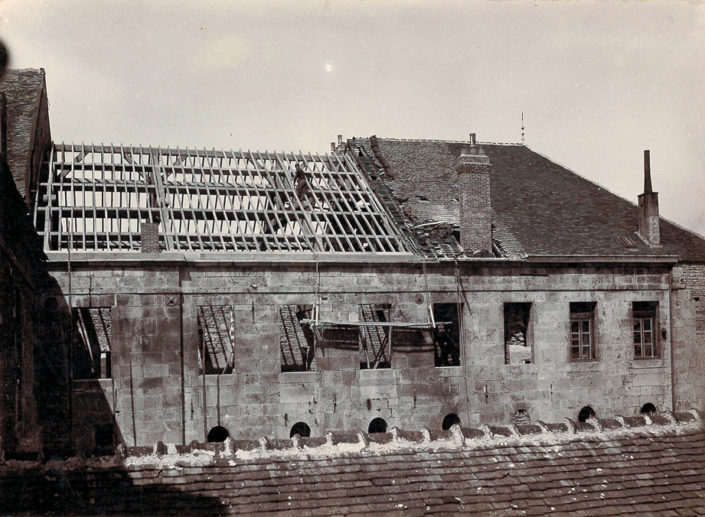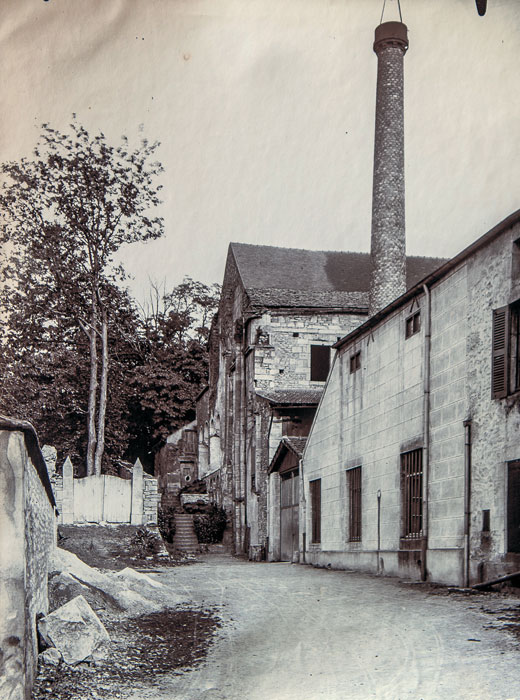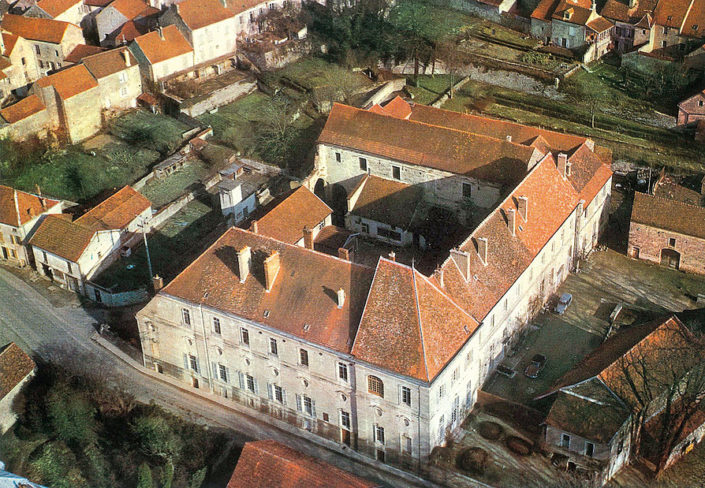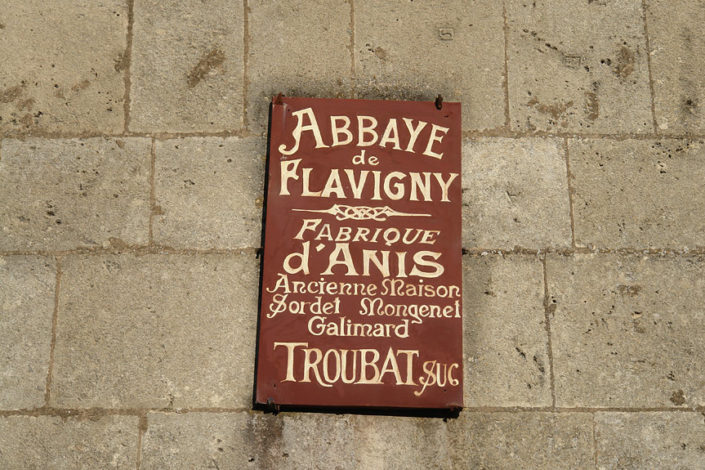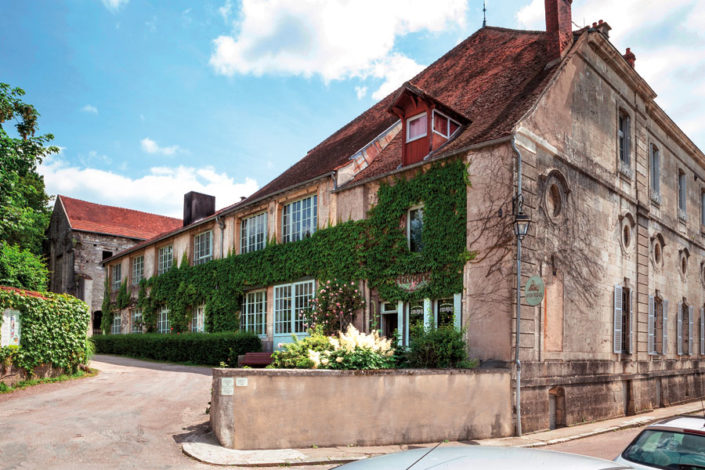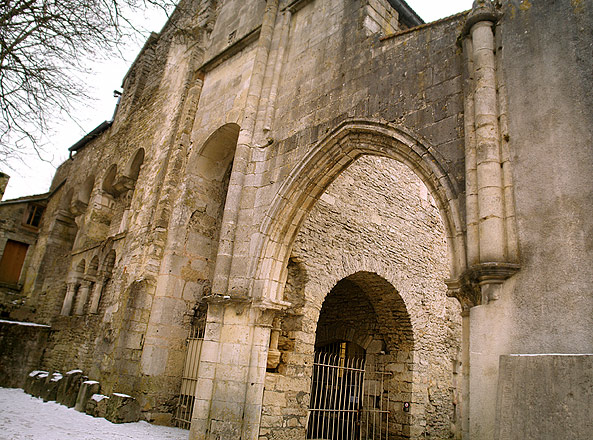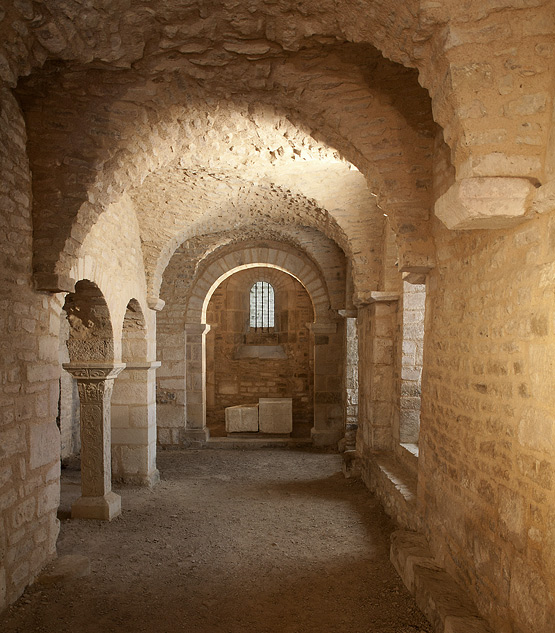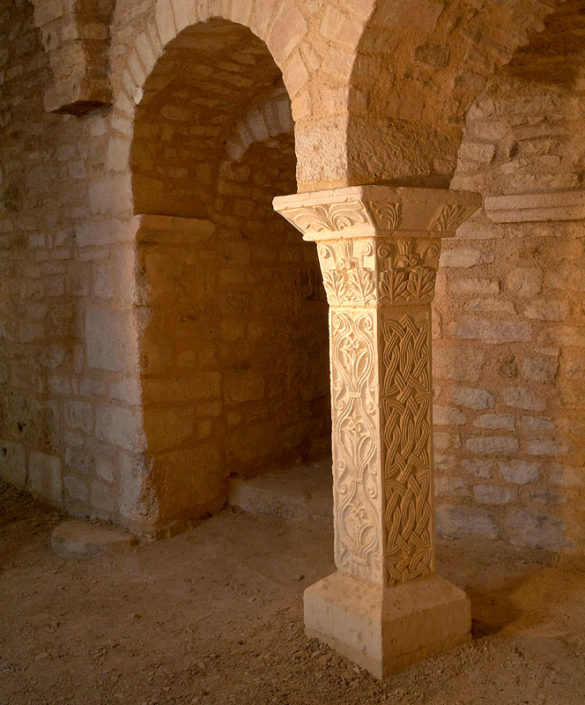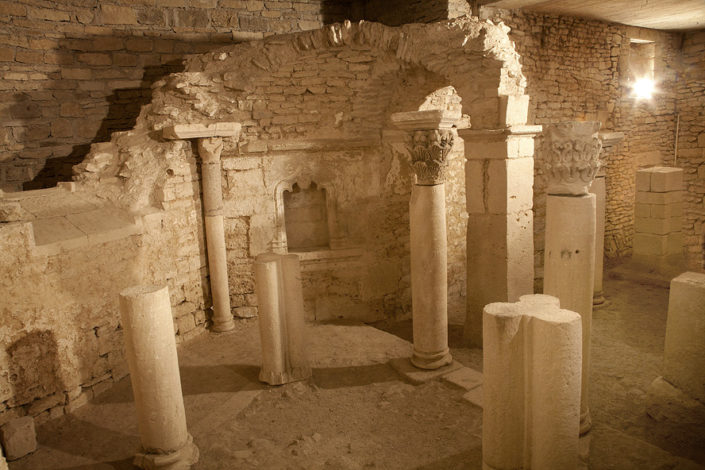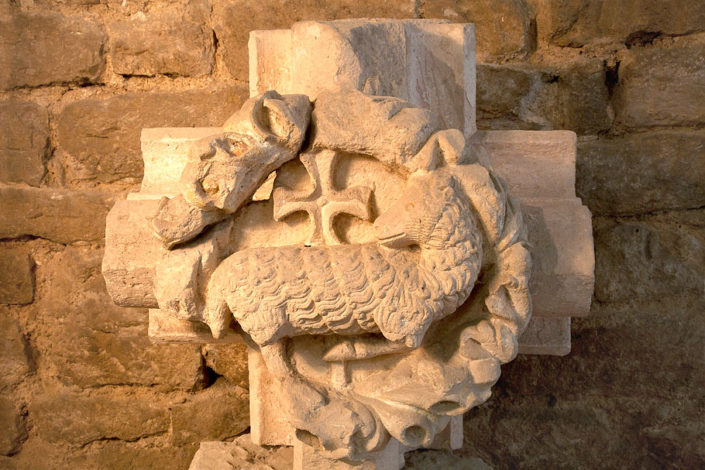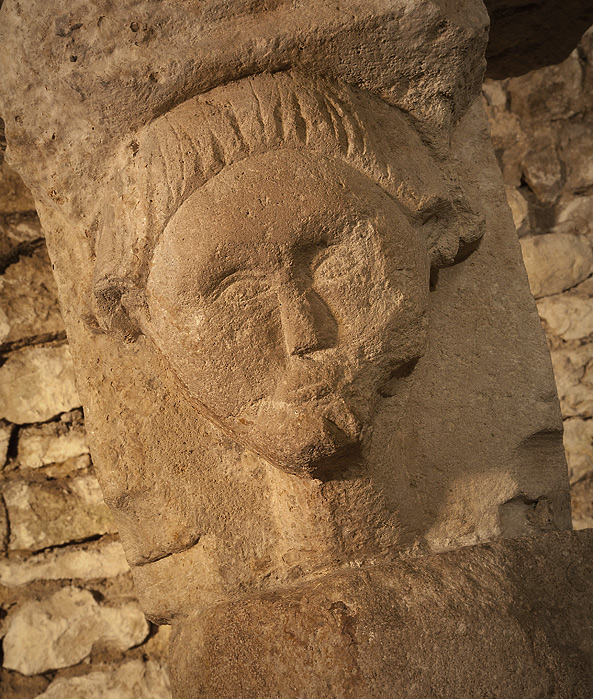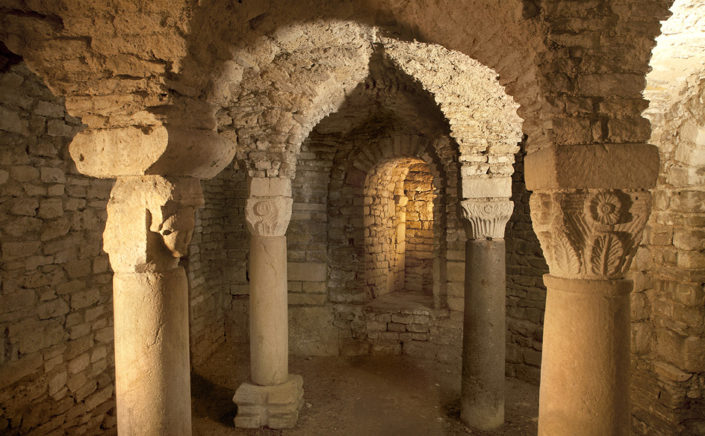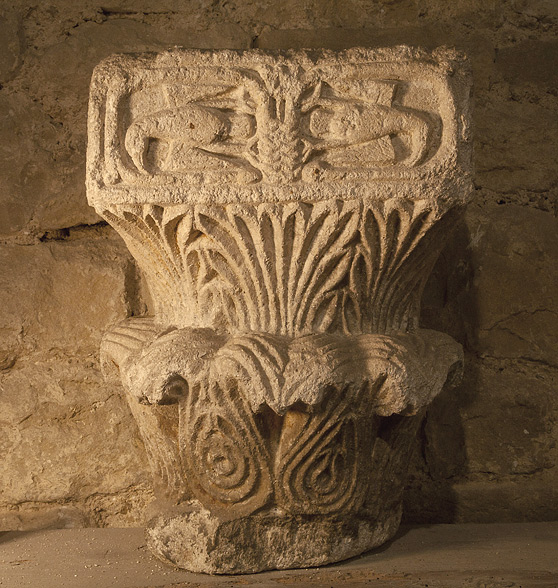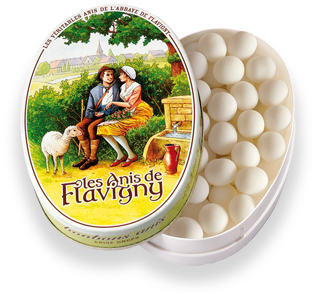Una lunga storia!
52 a.C.
Alesia: Cesare fa allestire sulla collina tre accampamenti militari, ospitanti tra l’altro un ospedale e un’infermeria. Porta con sé dei semi di anice verde per curare i disturbi digestivi delle sue truppe. Dopo la vittoria sui Galli, Cesare dona la collina a Flavinius, uno dei suoi veterani, che darà il suo nome al borgo.
5° secolo
I Burgundi, una tribù germano-scandinava, invadono la regione. Roma li autorizza ufficialmente a insediarsi nell’area alla quale lasceranno il proprio nome: la Borgogna.
Corbon, un signore borgognone, fece costruire un castellum a Flavigny (una roccaforte responsabile della sicurezza e della sorveglianza delle vie di comunicazione) sul sito della villæ di Flavinius. Sotto il regno di Clodoveo (465-511), a Flavigny fu fondata la prima abbazia. La Borgogna fu poi annessa al regno franco nel 534.
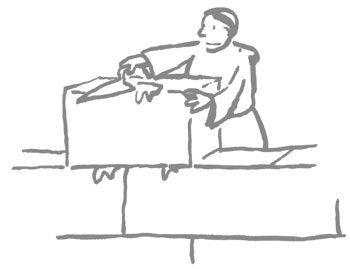 719
719
Fondazione dell’abbazia da parte di Waré (o Wideradus). Oggi l’abbazia* è uno degli edifici religiosi più antichi di Francia e presenta una rara pianta verticale carolingia intatta. La regola benedettina redatta da San Benedetto di Nursia nel VI secolo divideva la vita quotidiana dei monaci tra preghiera, lavoro manuale e lavoro intellettuale.
* Un’abbazia è un luogo chiuso in cui vivono uomini o donne che obbediscono a una regola monastica. Quanti non vivono all’interno dell’abbazia non possono entrarvi, eccezion fatta per i pellegrini che hanno accesso alle cripte per venerarvi le reliquie, i corpi santi o i sarcofagi.

VIII secolo
La Laus perennis, o lode perpetua, viene cantata giorno e notte nella chiesa dell’abbazia. Nel 755, Manassès le Grand, abate di Flavigny, portò le reliquie di Saint Prix (noto anche come Saint Preject), vescovo di Clermont-Ferrand nel VII secolo.
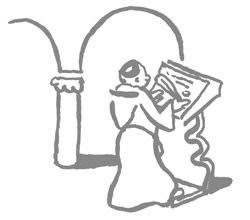
Alla fine dell’VIII secolo, l’abbazia viene dotata di un importante centro scrittorio. Molti libri dell’abbazia di Flavigny sono stati venduti dai monaci mauristi ai gesuiti nel 1642. Il resto è stato distrutto da un incendio, l’unico manoscritto che resta dell’abbazia è questo evangeliario, considerato un “Tesoro nazionale” e conservato nella biblioteca municipale di Autun a partire dal XVIII secolo. Una parte degli archivi di Flavigny si trova presso gli archivi dipartimentali di Digione. Il fondo ha un notevole valore e contiene soprattutto delle carte antiche.
L’ex libris risalente all’abbaziato di Manasse (755-788) attesta che questo evangeliario è stato proprio realizzato nello scriptorium dell’abbazia, riporta infatti: Liber sancti Petri Flavigniacensis, che significa “libro appartenente all’abbazia di Saint-Pierre”. È l’unico manoscritto ritrovato fino ad oggi, a partire dalla Rivoluzione sarà considerato “Tesoro nazionale”.
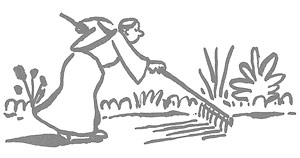 IX secolo
IX secolo
Nell’812, Carlomagno ordina che l’anice sia coltivato nei conventi e nei monasteri. Fu in quel momento che i monaci ebbero l’idea di rivestire un seme di anice con dello sciroppo di zucchero andando a creare quello che poco a poco sarebbe divenuto il confetto che successivamente si sarebbe chiamato Anis de Flavigny?
Nell’864 o nell’866, le reliquie di santa Regina vengono traslate nell’abbazia di Flavigny per proteggerle dalle invasioni normanne. Flavigny-sur-Ozerain diverrà il terzo luogo di pellegrinaggio più importante di Francia.
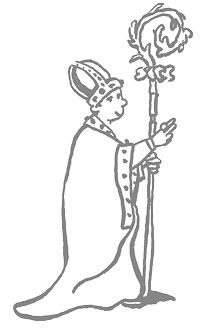 Nell’878, la chiesa abbaziale è consacrata dal papa, Giovanni VIII. Si dice che i monaci gli offrirono otto libbre di anice.
Nell’878, la chiesa abbaziale è consacrata dal papa, Giovanni VIII. Si dice che i monaci gli offrirono otto libbre di anice.
Nell’887, i Normanni conquistano Flavigny.
XII secolo
Costruzione delle mura cittadine e della chiesa parrocchiale di Saint-Genest. La crescita dell’Abbazia di FlavignyTM, che aveva acquisito diversi priorati tra il 1010 e il 1038, fu associata a quella della città.
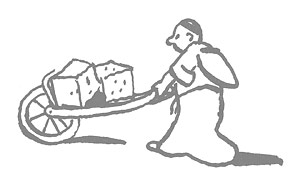
Dal 1210 al 1240
Ricostruzione della chiesa abbaziale in stile gotico (fatta eccezione per il presbiterio).
14° secolo
Occupazione di Flavigny da parte degli Inglesi che la considerano come una piazzaforte.
Fine del XIV – inizio del XV secolo
Nuove fortificazioni dell’abbazia e del borgo.
1591
Gli Anis de l’Abbaye de Flavigny® sono offerti agli ospiti di rilievo dalla città di Semur-en-Auxois.
Fine del XVII – inizio del XVIII secolo
1644 : insediamento dei monaci benedettini della congregazione di San Mauro che avviano svariate opere di rinnovamento all’interno dell’abbazia. Alla stessa epoca, il Duca di Saint-Simon riferisce che Luigi XIV amava succhiare delle caramelle “all’anisse” che conservava con cura in una confettiera da tasca rotonda e piuttosto piatta.
Anna d’Austria (1601-1666), in pellegrinaggio ad Apt nel 1660, si vede offrire “6 libbre di confetture secche, 4 libbre di confetti e 3 libbre e mezza di semi di anice rivestiti di zucchero”.
Nel 1700, durante il suo soggiorno a Digione, il principe di Condé riceve l’equivalente di diciassette chilogrammi di Anis de Flavigny. Nel 1703, riceve nuovamente ventiquattro scatole di Anis.
Nel 1701, Monsieur de Creancey, luogotenente del re per l’Auxois, e la sua sposa ricevono a Semur-en-Auxois dodici casse di Anis de Flavigny, per un peso e un valore complessivi di ventidue libbre e dieci soldi.
“Si definisce anice verde per distinguerlo dai confetti all’anice”. Estratto dall’Enciclopedia di Denis Diderot.
“I semi stanno al posto delle mandorle in questi piccoli confetti decisamente gradevoli… Gli anis”. Estratto dal Compendio di notizie di storia naturale di George Buffon.
1763
Il cavaliere d’Eon, spia del re Luigi XIII, nato a Tonnerre, facilita la firma di un trattato di pace con il re Giorgio V d’Inghilterra offrendogli degli Anis de Flavigny.
1792
I monaci fuggono e l’edificio è venduto come bene nazionale. Una parte della chiesa viene distrutta. Alcune pietre sono reimpiegate nella costruzione delle case del borgo.
Otto abitanti di Flavigny proseguono nella produzione degli Anis, per la maggior parte all’interno dell’antica abbazia.
1896
Il signor Galimard acquista l’abbazia e tutte le fabbriche di Anis per concentrarle in una sola insediata all’interno dell’abbazia.
1923
Jean Troubat rileva la fabbrica degli Anis, subentrando così alla famiglia Galimard. Ha l’idea di vendere Les Anis® nei primi distributori automatici posizionati nelle stazioni ferroviarie e in quelle della metropolitana. Li vende anche nei primi “grandi magazzini” parigini, durante le fiere e nei cinema. Nel 1928, fabbrica ottanta tonnellate di Anis e le distribuisce già negli Stati Uniti, in Canada, in Algeria e un po’ ovunque in Europa.
Dal 1956 al 1960
Riscoperta della cripta da parte di Fred Guggenheim, giovane studente americano di archeologia, che aveva portato a Jean Troubat la pianta di una magnifica cripta da riportare alla luce.
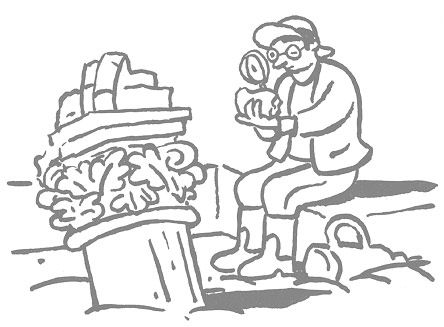
René Louis, Jean Marillier e Georges Jouven, architetto responsabile per i Monumenti storici, dirigono le campagne di scavo che permetteranno di riportare alla luce la cappella della Madonna delle Colonne.
1965
Nel 1965, Nicolas Troubat succede in azienda a suo padre Jean. Porta la produzione degli Anis da ottanta a duecentocinquanta tonnellate all’anno, utilizzando lo stesso metodo di produzione, sempre all’interno dell’antica abbazia. L’Anis de Flavigny® è stato poi distribuito sulle autostrade e nei supermercati di tutta la Borgogna. Nel 1988, il marchio ha ricevuto il “Nastro Blu Intersuc” per la longevità dell’Anis de Flavigny. Nel 1997, Nicolas Troubat ricevette il “Prix Montgolfier” per aver unito tradizione e modernità nello sviluppo dell’azienda.
1990
Dopo aver avuto la gioia di lavorare a fianco di suo padre, Catherine Troubat prende a sua volta in mano le redini dell’azienda, affiancata da sua sorella alla guida della società. Ora gli Anis® si trovano nei garden center, nei negozi di prodotti biologici, nei negozi di aeroporti e stazioni.
Nel 1992, la sede di Les Anis de Flavigny® è classificata con la menzione “Site remarquable du goût”.
Nel 2013, le vestigia visibili o ancora nascoste della chiesa abbaziale di Saint-Pierre sono a loro volta classificate come Monumento storico.
Nel 2016, la fabbrica degli Anis ottiene il riconoscimento di “Entreprise du Patrimoine Vivant”
